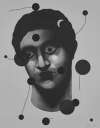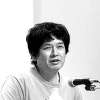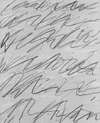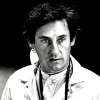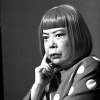Eduardo
Paolozzi
Eduardo Paolozzi, a key figure in the Pop Art movement, revolutionised the art world with his groundbreaking sculptures, prints, and collages that drew inspiration from popular culture and mass media. If you're looking for Eduardo Paolozzi original prints and editions for sale or would like to sell, request a complimentary valuation and browse our network's most in-demand works.
Eduardo Paolozzi art for sale
Discover Eduardo Paolozzi prints for sale, exclusively available through our private network of collectors. Explore signed and unsigned screenprints, lithographs, digital prints, and rare editioned proof prints by era-defining blue chip artists.
Sell Your Art
with Us
with Us
Join Our Network of Collectors. Buy, Sell and Track Demand
Biography
Born in Leith, Edinburgh, in 1924, Eduardo Paolozzi was the eldest son of Italian parents. His early life was marked by the hardships of World War II. Despite these challenges, Paolozzi's artistic talent emerged at a young age, and he went on to study at the Edinburgh College of Art and later at the Slade School of Fine Art in London.
Paolozzi's work was heavily influenced by his fascination with popular culture, science, and technology. He was a key figure in the Independent Group, a collective of artists, writers, and critics who laid the groundwork for the Pop Art movement in Britain. Paolozzi's 1952 lecture, Bunk, which featured a series of collages made from American magazines, is a seminal moment in the birth of Pop Art.
Throughout his career, Paolozzi experimented with a wide range of media, including sculpture, printmaking, ceramics, and textiles. His sculptures often incorporated found objects and industrial materials, reflecting his interest in the relationship between art and technology. Notable examples include the Bunk series (1947-1952), The History Of Nothing (1962), and the bronze sculpture Newton After Blake (1995) in the British Library piazza.
Paolozzi's printmaking practice was equally innovative, with his bold, graphic style and use of screenprinting techniques. His print series, such as As Is When (1965) and Zero Energy Experiment Pile (1970), demonstrated his ability to combine disparate elements into cohesive, vibrant compositions.
He held various teaching positions in sculpture and ceramics, including at the Hochschule für bildende Künste Hamburg between 1960–62 and the University of California, Berkeley in 1968. Paolozzi had a long-standing connection with Germany, beginning in 1974 when he worked in Berlin as part of the Berlin Artist Programme of the German Academic Exchange Programme. He later served as a professor at the Fachhochschule in Cologne from 1977 to 1981 and taught sculpture at the Akademie der Bildenden Künste in Munich.
Paolozzi's work gained international recognition, with exhibitions at institutions including the Tate, the Museum of Modern Art, and the Venice Biennale. In 1989, he was knighted by Queen Elizabeth II for his contributions to the arts. Paolozzi continued to create art until his death in 2005, leaving a vibrant legacy in the art world and pop culture more broadly.











































